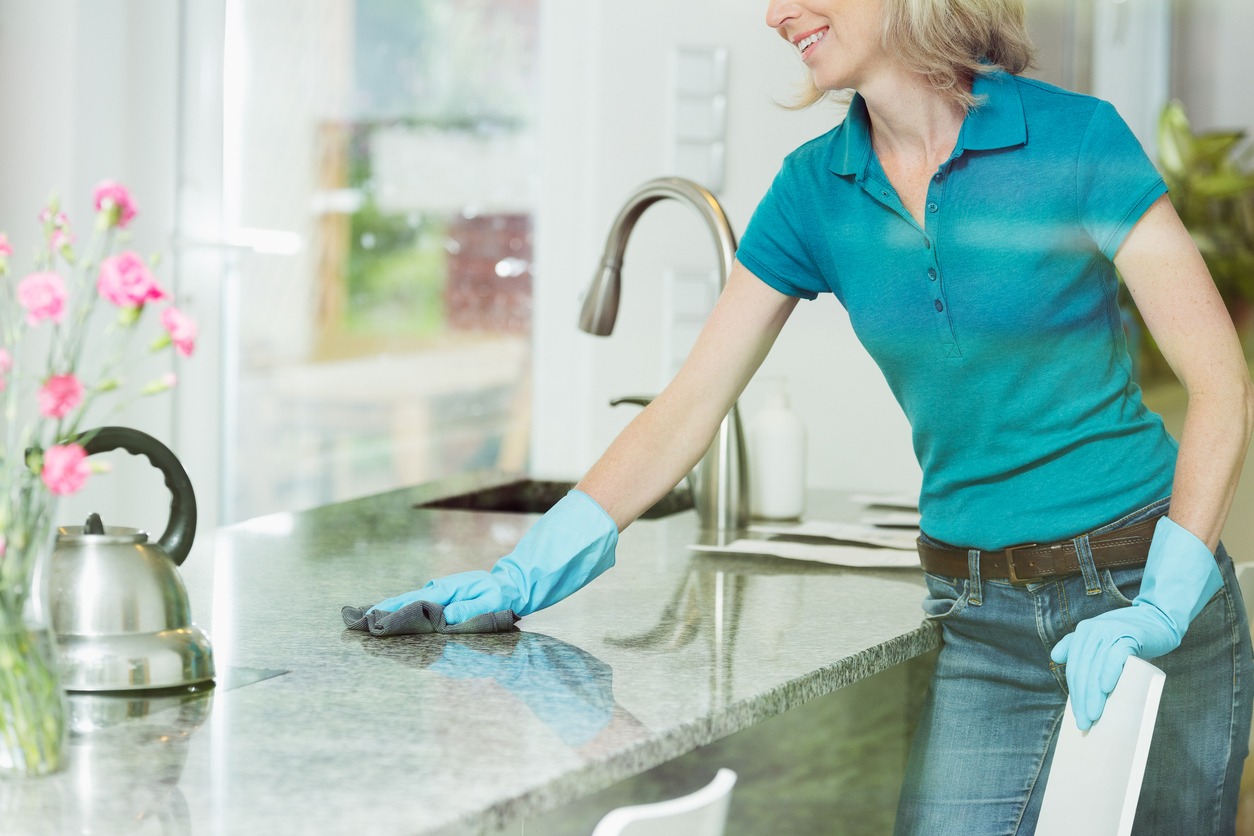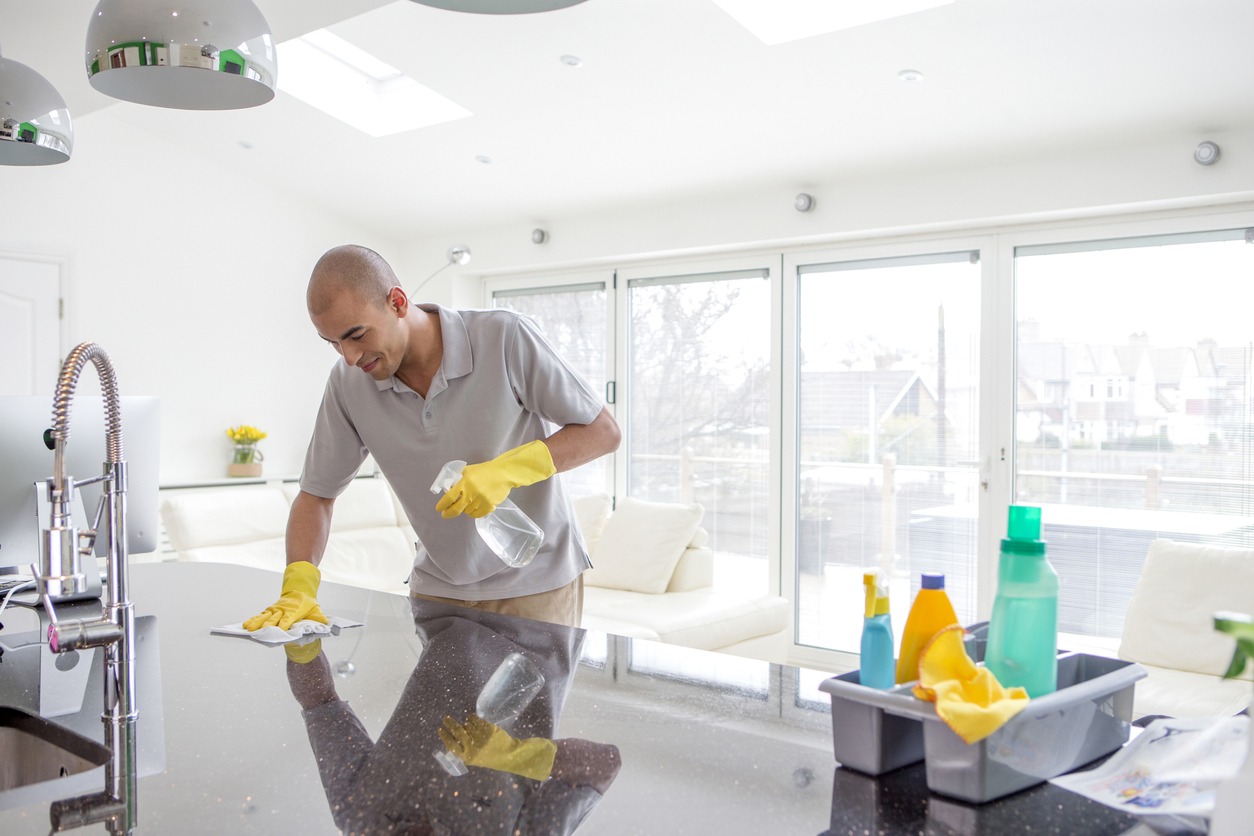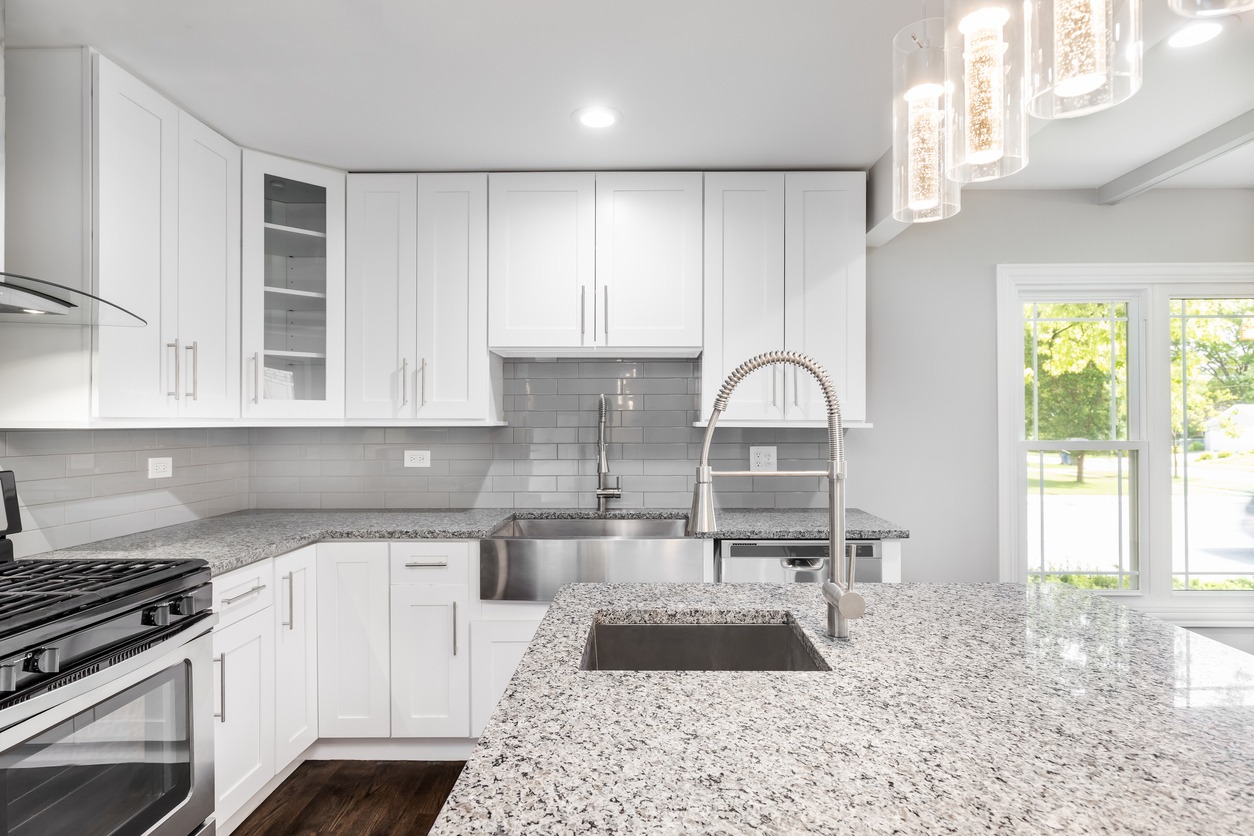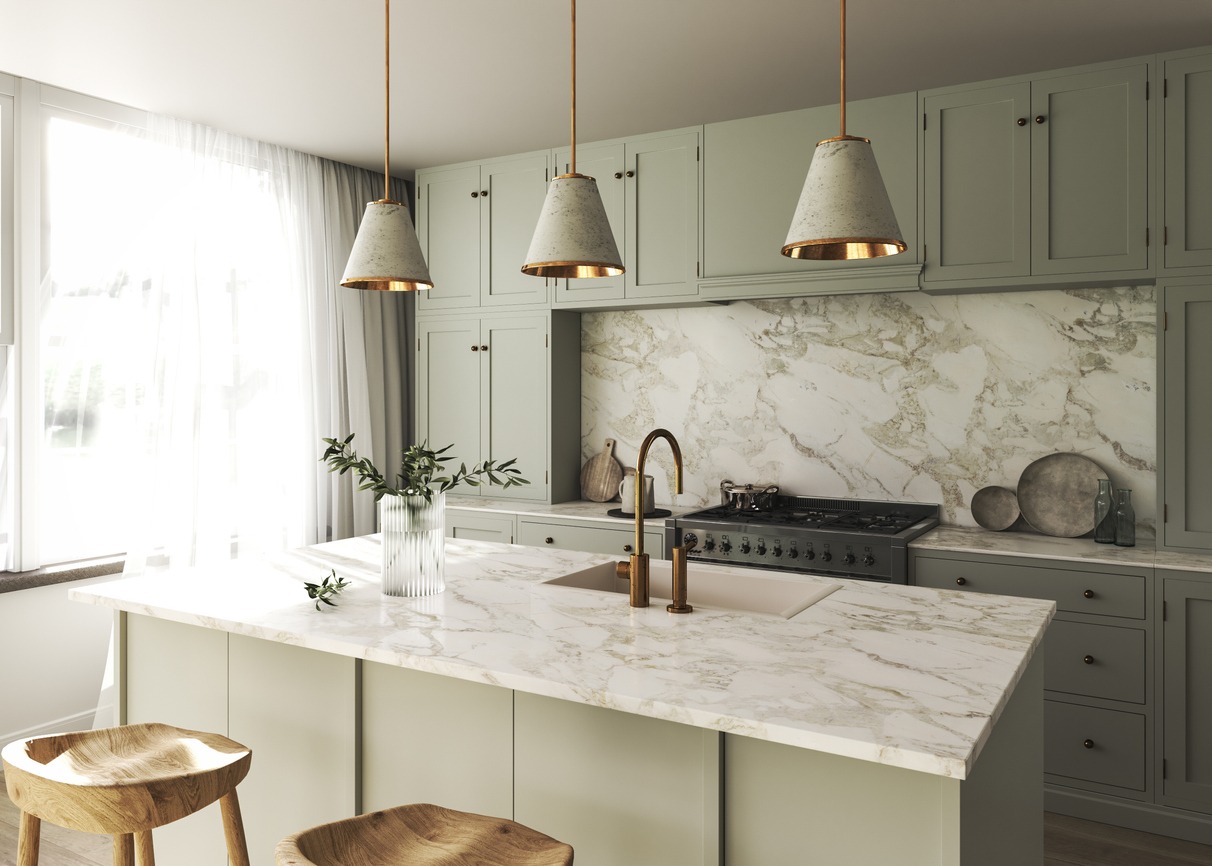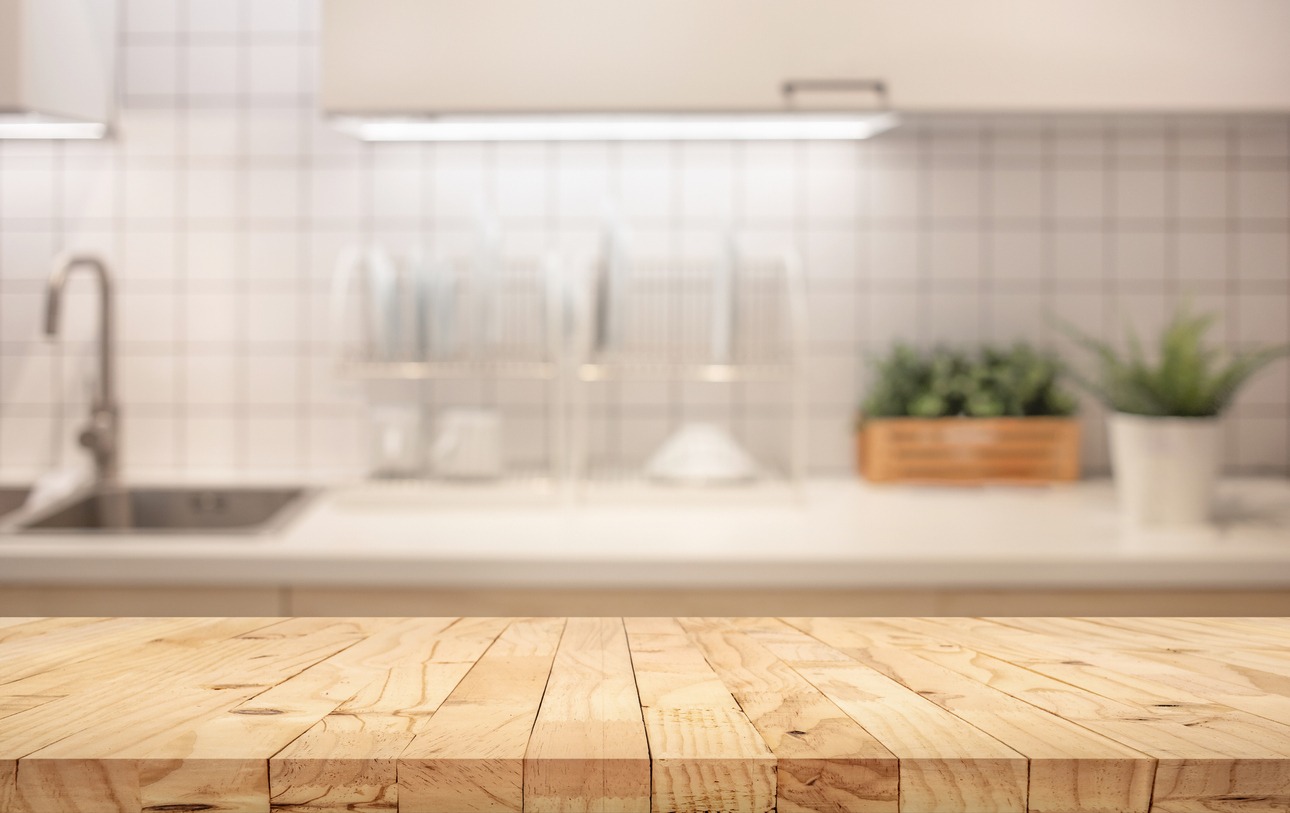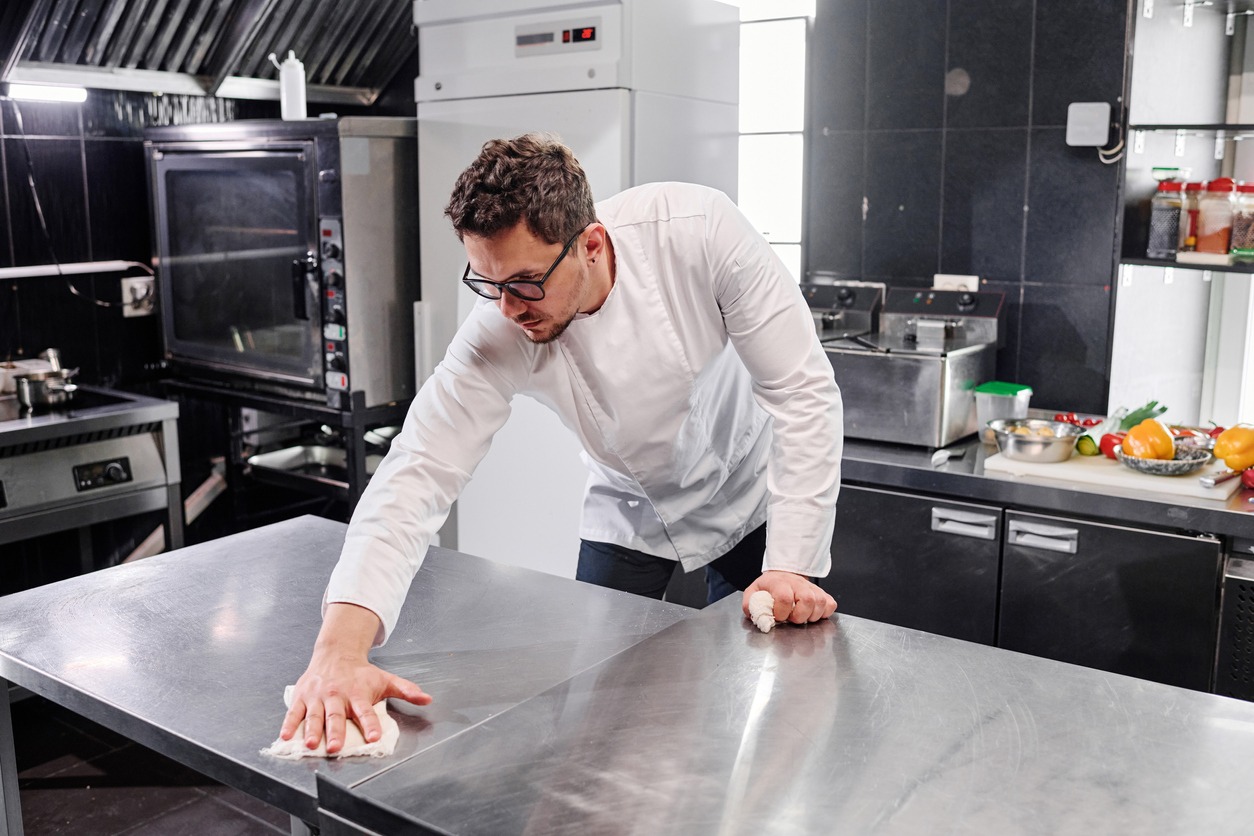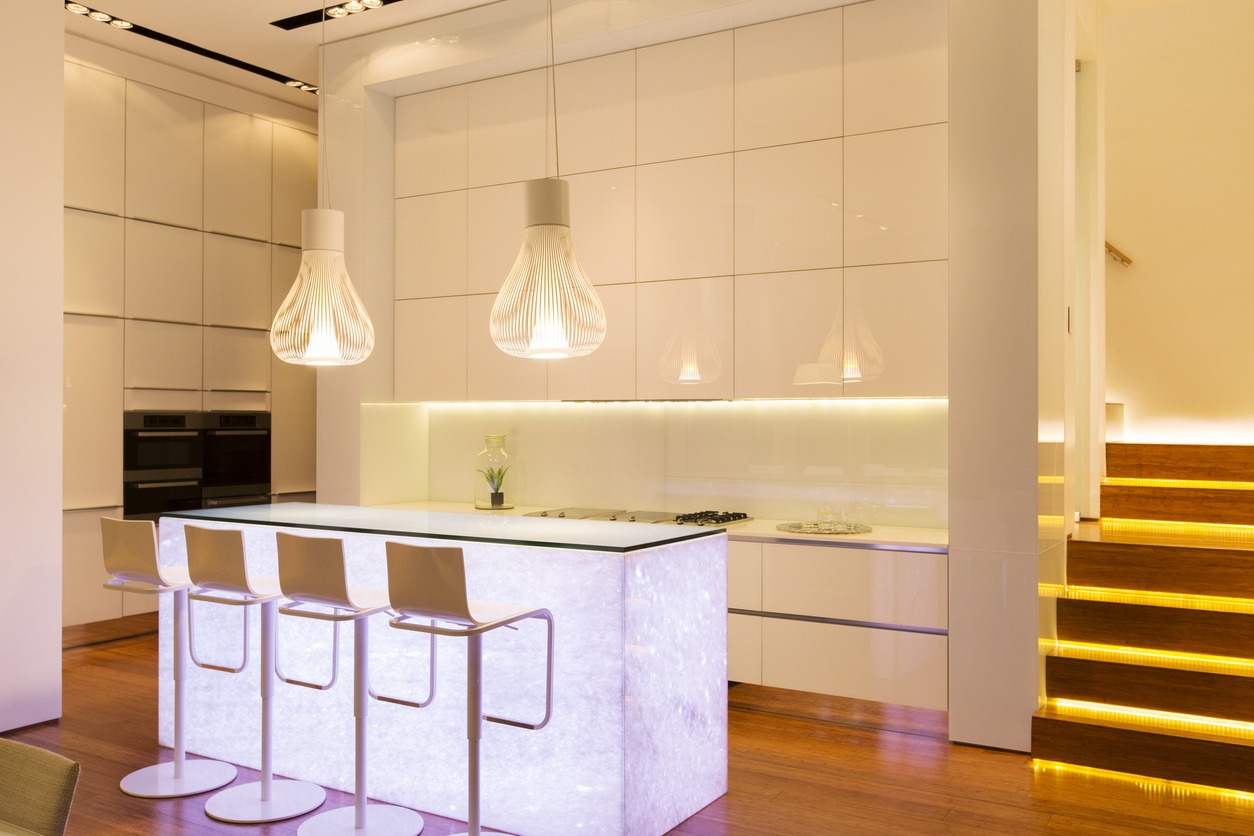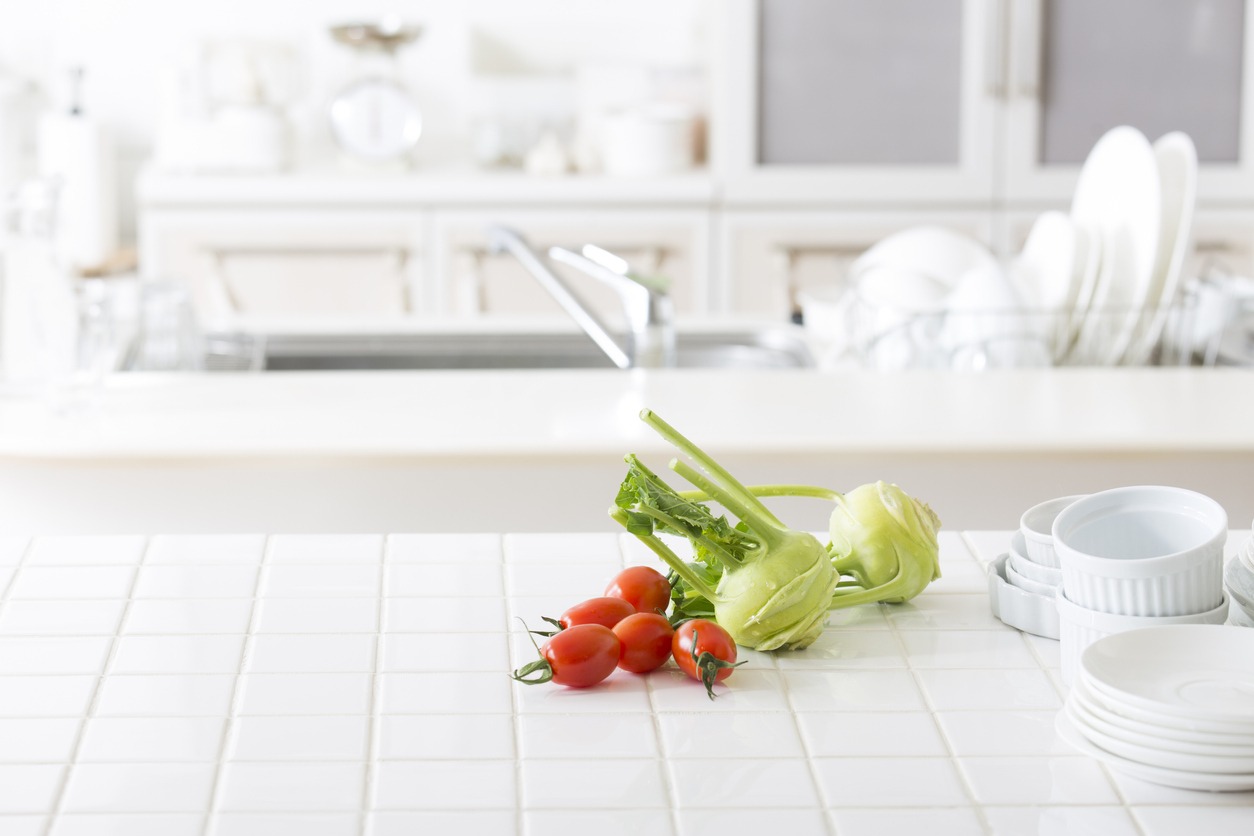When you step into your kitchen for your morning coffee or evening meal prep, a clean countertop is a welcoming sight. Luckily, keeping it spotless isn’t a complex task. Whether you’re dealing with sticky messes, spills, grime from grocery bags, or potential contaminants from raw foods, we’ve got advice to help you clean any type of kitchen countertop.
How to Clean Kitchen Countertops
The kitchen is the busiest area of the house, and it can get pretty messy. Whether you’re prepping meals or using your fancy kitchen gadgets, your counters deserve regular cleaning after use. Here’s a simple guide to help you clean it properly:
What You’ll Need:
- Cleaning Cloths: Microfiber cleaning cloths, paper towels, or your regular kitchen towels will work. You’ll need at least two—one for applying soap and rinsing and another for drying.
- Dish Soap: Choose a gentle dish soap for routine cleaning to avoid damaging the countertop surface or its sealant. Dish soap is usually perfect for this job and is most likely already in your kitchen.
- Disinfectant: Regular cleaning isn’t the same as disinfecting. For high-touch surfaces like kitchen counters, it’s essential to disinfect regularly, especially if you handle raw meat. Make sure your disinfectant is suitable for your countertop material; avoid acidic cleaners like citric acid, vinegar, and bleach on natural stone surfaces like granite or marble.
- Kosher Salt and Lemon: For stubborn stains on wooden countertops, keep these on hand.
- Sealer: If you have natural stone countertops, such as granite or marble, you must periodically reapply the protective layer to prevent moisture from seeping in.
- Wood Conditioner: For butcher block countertops, a food-grade wood conditioner will keep them in great shape.
How Long Will It Take?
The time required depends on your countertop’s size, material, and how often you clean it. Generally, plan for around 30 to 45 minutes. Tough stains may take a bit longer, but you’ll have your counters looking fabulous in no time.
Easy Steps to Clean Your Countertop
Cleaning your countertop doesn’t have to be complicated. Here’s how you clean:
1. Clear and Prep:
- Remove crumbs and debris from your countertop.
- Relocate any appliances or items sitting on the counter to get access to all areas.
2. Gather Your Supplies:
- Grab a kitchen towel or microfiber cloth.
- Add a small amount of dish soap to warm water to create a soapy solution.
3. Cleaning:
- Dampen your clothes with the soapy water.
- Wipe down the entire countertop.
- Reapply dish soap if you run out of suds before finishing.
4. Rinse:
- Rinse your cloth thoroughly to remove soap.
- Rewet it with warm water and use it to rinse off any soap residue from the countertop.
- Dry the counter with a clean, dry cloth.
5. Disinfect (If Needed):
- Use a disinfecting wipe or surface cleaner to remove any lingering contaminants.
- Follow the disinfectant’s instructions for proper contact time.
- Be cautious with natural stone counters; avoid acidic cleaners that could damage the sealer or the stone itself.
- Always do a spot test before using a new disinfectant.
Cleaning Tips for Different Countertop Materials
And remember, different countertop materials call for different care methods. Read on to discover how to clean countertops made of granite, marble, tile, wood, and more:
Quartz Countertops

Quartz is a top pick for countertops due to its remarkable durability. However, it’s not indestructible. For care, promptly clean up spills and use cutting boards to shield the quartz.
Start with soap and water—skip bleach and any products containing it. Glass cleaners like Windex are also inappropriate. Avoid harsh and acidic cleaners, as well as bleach and vinegar. For sanitizing, turn to isopropyl alcohol; it’s your best choice for keeping quartz surfaces germ-free.
Quartz countertops are mostly resistant to stains. If a persistent mark cannot be removed, soap and water, apply a paste of baking soda, and allow it to sit for a few minutes before rubbing in circular motions. You can also use cleaners like Goo Gone, but perform a test on a hidden spot first to ensure it won’t cause discoloration or harm. Apply a small amount to the stain, let it sit briefly, and gently scrub with a microfiber cloth. Rinse with water and dry using a clean microfiber cloth.
Granite
Cleaning your granite surfaces is simple, just like with quartz, but remember to steer clear of bleach, vinegar, lemon juice, ammonia, glass cleaners, and other strong chemicals. Stick to a mixture of warm, soapy water for everyday cleaning. If you need a bit more power, opt for a granite-specific cleaner. Avoid abrasive cleansers or scrub pads, as they may cause scratches.
For stubborn stains, try this: Create a mixture of equal parts isopropyl alcohol and water, then gently wipe it onto the stained area with a microfiber cloth.
Another method for stain removal involves a thick paste, similar in consistency to toothpaste, made from baking soda and water. Begin with a heaping tablespoon of baking soda and gradually add water until it forms a paste that sticks to your countertop. Apply this paste over the stain, cover it with plastic wrap, and let it sit for at least 24 hours. Then, use a microfiber cloth, water, and mild dish soap to clean it off. You may need to repeat the process a few times, but it’s safe and gentle, ensuring your granite stays unharmed.
To sanitize the surface effectively, you can apply undiluted isopropyl alcohol. It’s a good idea to put it in a spray bottle for easy application.
Marble
When cleaning marble, stick to using dish soap and water when cleaning marble, followed by a microfiber towel to give the stone a shine. Avoid abrasive or acidic cleaners, as they can damage the sealant and the stone itself. Make sure to wipe dry with a clean cloth, as allowing it to air dry can lead to water spots. For deeper cleaning, use a pH-neutral dishwashing liquid mixed with warm water. Rinse thoroughly to remove any residue and wipe completely dry.
If regular soap and water aren’t cutting it, opt for a specialized marble cleaner or a pH-neutral stone cleaner. Be cautious about using products not meant for natural stone, as they may not have a neutral pH and could potentially dull the marble or create uneven spots.
If acidic liquids like wine, orange juice, tomatoes, and soft drinks spill on your countertop, act quickly, as if they set in, they permanently affect your marble. For surface-level stains, including those from evaporated water, go for a marble-specific cleaner. Alternatively, try the method recommended for granite: Spread a thick paste of baking soda and water over the stain, cover it with plastic wrap, and let it sit for at least 24 hours. Then, use a microfiber cloth, water, and mild dish soap to clean it off, repeating if necessary. For sanitizing, a spritz of isopropyl alcohol will do the job.
To protect the porous surface of marble, use a product specifically designed for it. While these surfaces are known for their durability, they still need periodic resealing to safeguard against stains. Aim to reseal granite once a year and marble every few months.
Butcher Block
To clean your butcher-block countertops, use a clean sponge or soft cloth along with a solution of water and mild dishwashing liquid. Dry the wood with a soft cloth. To get rid of bacteria from raw meat and other contaminants, use a mixture of one tablespoon of bleach in one gallon of warm water. Afterward, wash and dry with mild dishwashing liquid as instructed above.
If there are stains, blot up as much of the stain as possible to prevent it from penetrating the wood’s pores. For light stains, try sprinkling salt on the spot, then scrub with half a lemon. If the stain persists, let it sit overnight before rinsing it with water and drying it with a clean cloth. For darker wood countertop stains, consider dabbing the area with a cotton swab dipped in a 3 percent hydrogen peroxide solution to lighten it.
For persistent stains like red wine or other permanent stains, you might need to lightly sand the area and apply a new coat of finish. If you’re uncertain about matching the finish, it’s wise to call in a professional for the job.
Laminate
Laminate countertops, while more budget-friendly than natural stone, still require some care. All you need for regular cleaning is a clean cotton cloth, water, and a mild, non-chemical liquid detergent.
To clean laminate countertops, use warm, soapy water, a mild bleach solution, or a nonabrasive kitchen cleaner. Avoid abrasive cleaning pads or stiff-bristled brushes, as they can scratch the surface. For seams or metal edging, use a soft toothbrush. Be cautious when using bleach solutions, as they may alter the countertop color or cause surface damage. Test in an inconspicuous spot first.
If you encounter a stubborn stain that regular soap and water won’t budge, try making a paste with baking soda. Let it sit on the stain for 24 hours, then wipe it away with a microfiber cloth.
Try cleaning kitchen countertops with natural ingredients like vinegar and water for greasy buildup. If the surface feels tacky, rub with a paste of baking soda and water, then rinse. No sealing is necessary for laminate countertops.
Stainless Steel
Stainless steel is common in kitchens, often as part of stoves or countertop sections. However, it’s prone to damage, so don’t treat it the same as the rest of your countertop. Opt for a specialized product like Bar Keepers Friend or a stainless steel cleaner for deep cleaning. Avoid bleach-based cleaners as they can harm stainless steel. A gentle wipe-down with mild soap and warm water is enough for everyday cleaning.
When applying any cleaning product, use a microfiber cloth. Scratching stainless steel is easily done, and once it’s scratched, it’s tough to repair. If you do find scratches, you can attempt to buff them out with a scrub pad like Scotch-Brite, but it requires precision. If unsure, consider hiring a professional to avoid further damage.
After rinsing and drying stainless steel, apply a light coat of mineral oil to help resist streaks, smudges, and fingerprints. Pro tip: This technique also works well for stainless-steel appliances like fridges.
Despite its name, stainless steel can still develop unsightly stains. Create a paste using dish soap and baking soda, and use a soft cloth to rub in the direction of the grain.
Glass
To clean glass countertops, use any regular commercial soap or cleaners you have on hand for hard surfaces, like glass cleaner or multi-purpose cleaner. To avoid scratches, opt for a soft cloth or sponge and steer clear of abrasive cleaners and scratchy tools.
Glass countertops are naturally stain-resistant, so there’s no need for sealing.
Porcelain
While porcelain is more commonly used for tiles in the U.S., it’s gaining popularity as a countertop material. It’s impressively durable, resistant to scratches, and can handle high temperatures. However, when it comes to cleaning, stick to gentle solutions. Use dish soap and water or products with a neutral pH. For stubborn spots, powdered Bar Keepers Friend is a reliable option. Apply it to a damp microfiber cloth and rub in a circular motion, avoiding direct application to the porcelain. Avoid abrasive cleaners and scrub pads to prevent surface scratches.
While tile itself doesn’t stain easily, grout can. It’s also a prime spot for bacteria. Scrub the grout with a mild bleach solution and a toothbrush, then seal it with a commercial grout sealer.
Glazed ceramic tile doesn’t require sealing. However, grout should be sealed to make it stain-resistant. For unglazed tile countertops, use a penetrating sealer for protection and stain resistance.
Solid Surface (Corian)
To clean solid surface materials like Corian, use water, soapy water, or cleaners designed for it. After cleaning, wipe the surface dry instead of letting it air dry to prevent the buildup of a film. Occasionally, you can disinfect the counter with a diluted bleach solution (50-50 bleach and water). Rinse thoroughly, then wipe dry. You can use multi-purpose cleaners, but avoid window cleaners.
These countertops are resistant to stains, and most can be wiped away with soap and water. For more stubborn issues like scorch marks, scratches, or persistent stains, consult your countertop fabricator for advice on renewing the surface.
Soapstone Cleaning
Clean your soapstone countertop with any multi-purpose cleaner, as long as it’s not abrasive. To keep your soapstone countertop in good condition and avoid damage, steer clear of vinegar, citrus, bleach, ammonia, or harsh chemical cleaners.
Most stains can also be removed with a multi-purpose cleaner. Use very fine sandpaper (no rougher than 80 grit) and apply mineral oil after sanding for scratches and tough stains.
